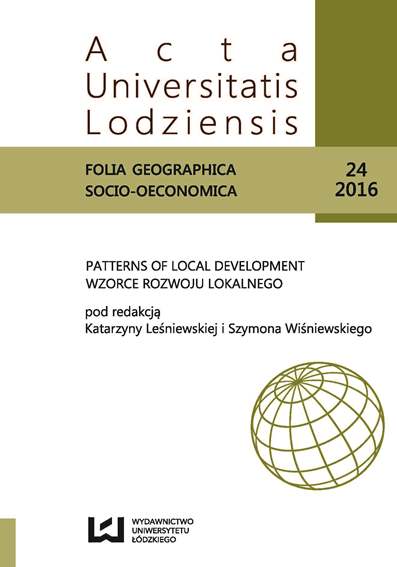Użyteczność źródeł pisanych i ikonograficznych w badaniach nad historią przestrzeni miejskiej (na przykładzie Mysłowic)
The utility of written and iconographic sources in historical urban space research (Mysłowice town case study)
Author(s): Weronika DraganSubject(s): Visual Arts, Historical Geography, Applied Geography, Maps / Cartography, Rural and urban sociology
Published by: Wydawnictwo Uniwersytetu Łódzkiego
Keywords: Written sources; iconography; Mysłowice; urban space;
Summary/Abstract: A range of various sources is used in geographical settlement studies, amongst which the most common are cartographic resources. In the case of a historical approach to geographical studies, however, archival written sources that provide much more information on the topic are equally important. The aim of the present study was to employ historical extracartograhic resources to recreate the structure of urban space in the chosen period of time and to show its variability. The study was conducted in the old town district, as it represents the oldest part of Mysłowice town. An additional aim of the study was to evaluate the utility of archival written and iconographic sources in the analysis of urban space transformations. The starting point of any study based on historical sources is the ability to correctly read (decode) the content of the used sources, thereby understanding the information contained in them. A number of both linguistic and terminological difficulties can be found when conducting such a study. Research has shown that this type of media for historical information (written and iconographic sources) is burdened with significant interpretation errors and requires authenticity verification. Historical source materials, however, have a number of advantages – they allow the researcher to recreate the functional space of the town, even in detail. What is more, iconographic materials are easily readable and allow the researcher to recreate the physiognomy of urban space. Written sources, in turn, provide valuable direct information on business entities and the space of the town. Working with historical sources is based on systematic verification of their reliability, complementing their contents or learning how to interpret them correctly. The researcher is thus required to learn, among others, the terminology of a specific period of time, new typefaces and languages, or how to decipher abbreviations and separate fact from fiction.
Journal: Acta Universitatis Lodziensis. Folia Geographica Socio-Oeconomica
- Issue Year: 26/2016
- Issue No: 4
- Page Range: 81 - 96
- Page Count: 16
- Language: Polish

